County Parks: Options for Staebler Farm
Washtenaw County parks and recreation commission meeting (June 12, 2012): This month’s meeting concentrated on Staebler Farm, a 98-acre WCPARC property on Plymouth Road in Superior Township.

A corncrib at the Staebler Farm in Superior Township. The farm isn't yet open to the public, but plans are underway to develop the site for educational and recreational use. (Photos by the writer.)
The parks and recreation commission bought the farm in 2001 and set aside more than $2 million to develop it for eventual educational and recreational uses. Possibilities include children’s gardens, a farm market, fishing, and demonstrations of farm activities.
Donald Staebler, who turns 102 in August, has lived there since he was two and has a life lease to stay in the 140-year-old farmhouse. The property is not yet open to the public.
At the June 12 meeting, commissioners heard from a consultant who described the use of similar property in three other communities: Ambler Farm in Wilton, Connecticut; the Intervale Center in Burlington, Vermont; and Luscher Farm in Lake Oswego, Oregon.
Commissioners discussed possible uses for the land, and decided on the next steps in creating a master plan for the farm. Dan Smith, a WCPARC member who also serves on the county board of commissioners, noted that this project fits with other efforts supported by the board, including community gardens on the former juvenile detention center site and the Washtenaw Food Policy Council that was created earlier this year.
In addition to their discussion of Staebler Farm, the commission carried out its usual business of approving expenses, reviewing the budget, and getting updates on its parks, recreation facilities and natural areas. Among those updates was a report that a design team for a proposed WCPARC recreation center in Ypsilanti held its first meeting to review a possible schematic design. The team consists of faculty and students from the University of Michigan Taubman College of Architecture and Urban Planning. [For more details on this project, see Chronicle coverage: "More Planning for Rec Center in Ypsilanti."]
Staebler Farm
Coy Vaughn, WCPARC’s deputy director, began his briefing on Staebler Farm with background about the property. The farm has been in operation since before 1880, and the Staebler family bought it in 1912. In 2001, WCPARC purchased it from Donald Staebler, who still resides in the 140-year old farmhouse with a life-lease. He is over 100 years old, which Vaughn said is “evidence of the healthiness of living the life of a farmer.” [Staebler was honored by the county board of commissioners in August of 2010 for his contributions to the community. His land was known as “Crick-in-th’-Back Farm.”]
Vaughn showed slides depicting the farm, which is bisected by Plymouth Road and lies just east of Prospect Road. The farmhouse is south of Plymouth, and most of the land south of the farmhouse is planted in hay, with a row of trees dividing that into two fields. South of the fields lies a “nice hardwood swamp on the south edge of the property, with a hardwood stand on the south east corner,” Vaughn said.
The property is adjacent to both Frain Lake, at the southwest corner, and Murray Lake, on the southeast corner, although neither lake is part of the farm.
A local farmer still farms the site and has run between 12 and 24 head of cattle and sheep on the land north of Plymouth Road, which Fleming Creek traverses. Vaughn noted that “these animals do what animals do, and it isn’t good for the creek,” so the animals are being phased out, he said. This part of the farm contains a large stand of mature trees. Vaughn said that the presence of the animals results in the ground “looking almost as if we had groomed it. It would be a great place for a pavilion.”
This section north of Plymouth also contains two large ponds, originally borrow pits for the construction of M-14, which is on the north side of the property. The ponds – north of but not connected to Fleming Creek – are now clear and deep, Vaughn asserted, and have a good stock of fish.
The land north of Plymouth Road includes a barn, a corncrib, and other outbuildings. WCPARC has helped to restore these buildings – the oldest dates to 1880 – and several pieces of antique farm equipment, which Staebler has given to WCPARC.
Staebler Farm: Development Objectives
Vaughn said that WCPARC’s general goal is to develop the farm into a year-round park, to respect the farm’s character, to provide recreational opportunities, and to develop educational, ecological, and social functions at a reasonable cost. As he put it, to “celebrate 110-plus years of agricultural tradition, take advantage of the site’s proximity to Ann Arbor, northeastern Washtenaw, and western Wayne County, utilize its many natural features such as woods and water, to preserve its biological and hydrological qualities, and to complement other park facilities.”
He also listed developing revenue-generating activities, and involving all stakeholders in a meaningful way, as additional objectives. He pointed out how visible the farm is from M-14, and that any change in the “farm with ponds” quality of the vista would be noticed by the many who commute daily on that road, as well as on Plymouth Road.
Vaughn gave more details about the major possibilities, none of which have been determined but all of which – along with new ideas sure to be generated at the current meeting and in future discussions – will be considered.
- Recreational opportunities: activities related to farming such as crops, gardens, a small orchard, hoop house, pumpkins, bee hives, a sugar shack. “This will not be a theme park,” he said several times.
- Food production and distribution: perhaps home to a farm market, or a CSA [community supported agriculture], a food co-op, and a value-added kitchen.
- Educational purposes: teaching children and adults about farming, gardening, caring for animals, learning about farm history, perhaps a museum. The idea is to celebrate the agricultural heritage of Washtenaw County, with an emphasis on the history and evolution of agricultural practices and current trends in sustainable farming.
- Special events: demonstrations of shearing and shoeing, special exhibits.
- Park amenities: picnic spots, perhaps a pavilion, possibly a banquet hall. There might be sports like fishing, but it’s much less likely that active sports will be allowed. Other amenities will include parking and accommodation to public access and circulation.
- Water resources: Fishing piers, boardwalk to swamp and lakes, and an effort to protect and improve Fleming Creek.
Vaughn then gave a long list of potential partners, with commission members jumping in to add more: 4-H, the Peoples Food Coop, the Fair Food Network, Food Gatherers, Growing Hope, Project Grow, the MSU Extension Service, residents and officials from Superior Township and neighboring townships, neighboring property owners, public schools, Eastern Michigan University’s Historic Preservation program, antique tractor clubs, and local farmers.
Staebler Farm: Case Studies
Vaughn then introduced Rebecca Bloomfield, describing her as a consultant who will help WCPARC staff develop the active farming component of the master plan for the Staebler Farm Park, so that it can contribute to the local food supply without any detrimental consequences to other farmers or food producers or distributors.
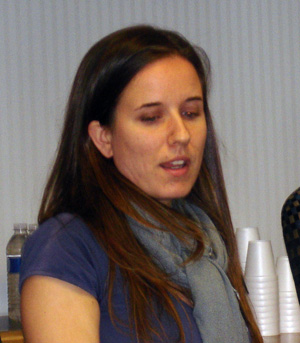
Rebecca Bloomfield, a consultant working on the Staebler Farm project, gave a report at the June 12 meeting of the Washtenaw County parks and recreation commission.
[Commission members had received a copy of Bloomfield’s resume, which shows her to hold a certificate in organic farming from Michigan State University in 2009, and a B.A. in international development from Queen’s University in Kingston, Ontario. In 2010-2011 she was first an assistant instructor and then a training program manager in MSU’s organic farmer training program. She has also held garden training positions at The Edible Schoolyard in Berkeley, Calif. and the American Jewish World Service, and served as an intern or volunteer at farms and cooperatives in Italy and Ontario.]
Bloomfield said she used three case studies to compare Staebler to similar farms around the country. In addition to the case studies, Bloomfield said she would provide WCPARC with a five- year timeline, a draft memorandum of understanding that could be used with partners, and additional recommendations, including budgets.
Staebler Farm: Case Studies – Ambler Farm
Ambler Farm in Wilton, Conn. has 22 acres, only one of which is in production, because much of the land is wooded or otherwise not usable. Ambler has an educational program. The town of Wilton bought the 200-year-old farm in 1999. They want to expand production beyond 1 acre within the tillable land.
The organization developed its plan first as a steering committee in 2000, and then evolved into Friends of Ambler Farm in 2005. By 2006 they had a five-year business plan and hired a program manager in 2007 and a farmer in 2008. Now Ambler has three staff members: a full-time director of agriculture, a part-time program manager, and a part-time financial assistant.
Ambler sells produce, Bloomfield said, at an off-site farm market and their onsite market. The community is very involved with educational programming, community events, and agricultural programming. The site is open to the public, has summer camps for kids, and educational programs for adults throughout the year. A few sheep and chickens serve as educational tools, she said.
Bloomfield presented an overview of Ambler’s finances:
Bloomfield concluded by summarizing this advice from Ambler: Get the neighbors on your side (they had to get zoning changes approved); break ground as soon as possible; and involve someone in the school system.
Staebler Farm: Case Studies – Intervale Center
The second case study that Bloomfield presented was for the Intervale Center in Burlington, Vermont. According to the center’s website, the “intervale” is 700 acres of bottomland within the city limits of Burlington. Bloomfield said the Intervale Center covers 350 of those 700 acres. The center’s purpose is to improve the viability of small farms, provide sustainable use of land, and connect the community to its food system. Intervale is also home to a conservation nursery, a food hub, a community farm, and other sustainable agriculture programs and organizations.
Bloomfield reviewed the history of Intervale: In 1986, Will Raap moved his Gardeners Supply Co. to the intervale and led a cleanup effort there. The area had been badly flooded in the 1920s and housed a municipal dump and a pig farm in succeeding decades. In 1987, Burlington rezoned the area to exclude residential and industrial growth. In 1988, Gardeners Supply Co. founded the Intervale Foundation, and in 1989 the Intervale Community Farm CSA began – the first CSA in Vermont. In 1990, an incubator farm program was established.
[By way of explanation, CSA stands for “community supported agriculture.” It provides a way for consumers to buy fresh, seasonal food directly from farmers. Here are the basics: a farmer offers a certain number of "shares" to the public. Typically the share consists of a box of vegetables, but other farm products may be included. Interested consumers purchase a share (aka a "membership" or a "subscription") and in return receive a box (or a bag or basket) of seasonal produce each week throughout the farming season. The advantages for farmers and consumers, and more information, are provided on the LocalHarvest website. A searchable database of Washtenaw County CSAs is available here.]
The Intervale Center’s programs include:
- A program to incubate farms.
- A “success on the farm” program to provide mentors to farmers to help improve their business – for example, by connecting the farmer to a lawyer, accountant, more experienced farmer, or other expert, at no cost to the farmer.
- A “food hub,” which is a new community supported agricultural program with a number of farms participating. For example, one farm provides honey, another meat, another vegetables, so that the customer gets three kinds of food from one share.
Intervale has nine full-time staff, several part-timers, and many seasonal and volunteer workers. It’s open to the public, with weekly events in the summer and an annual weekend event in the winter. Intervale rents out its facility, and markets the food it produces through CSAs, wholesale, at farmers’ markets, and through its food hubs. There are many farmers’ markets, Bloomfield said, because there are so many farms in the area.
Bloomfield said Intervale identified these challenges: Meeting the demand they created (Intervale supplies 10% of Burlington’s fresh food); and a need to diversify their cash flow, which can conflict with focusing on what the center does best. Intervale’s example: They had a municipal compost facility that was their main source of income. But after an unusually rainy season, it “got them in trouble and they ended up selling it,” Bloomfield said.
Staebler Farm: Case Studies – Luscher Farm
Luscher Farm is a 100-acre property that’s owned by the city of Lake Oswego (Oregon) parks and recreation department, Bloomfield reported. The city bought 47 acres in 1991 with a life estate agreement with the former owner. In the mid 1990s, voters approved turning the land into a public park. In 2007, the Friends of Luscher Farm was formed.
Programs there include community gardens – including a children’s garden – public events, classes, camps, and rental of facilities. There are two CSAs: one that’s run by the city, and another called 47th Avenue Farm, which a local farmer rents from Luscher. Partnerships include Oregon Tilth, which certifies organic produce, and the Rogersson Clematis Collection and botanical garden.
Staff at Luscher includes a full-time director, a part-time children’s garden coordinator, contracted labor for maintenance, and volunteers.
Challenges that Bloomfield cited from this case study include retaining community support for agricultural use of the land – some people want to turn it into a sports field. However, Bloomfield said that surveys show high support from the community to keep it in agricultural use, and said the farm’s director is not concerned about that. [By way of further background, the Luscher Farm website shows the presence of two dog parks, one athletic field with a lighted ball park, and walking trails supported by a land conservancy.]
The second challenge for Luscher Farm is meeting demand for community gardens. Right now, they have a long waiting list even as they expand, Bloomfield said.
After presenting the three case studies, Bloomfield named other farms she planned to check out in the future: Common Ground Farm in Beacon, N.Y., The Food Project in Boston; and Holcomb Farm in West Granby, Conn.
Staebler Farm: Commission Discussion
Commissioner Dan Smith opened the discussion by observing that “it looks as if Luscher Farm is using the parks department to run it.” Others agreed, noting that Luscher, unlike the other two, does not have a positive financial statement.
Commissioner Rolland Sizemore Jr. asked: “Why not just keep Staebler Farm a park?” Coy Vaughn responded that because the land has been farmed for over 100 years, there is a desire to keep it functioning that way, although the township is anxious to have the property open to the public. Sizemore pressed further: “Can’t we have animals there, maybe for the 4-H?” Vaughn repeated his earlier opinion that “we do not want a petting farm.”
Sizemore asked another question: “Are we going to mess anyone up? Who might not like this?” Vaughn responded: “We hope not to. We will take this to the township and have open meetings, and an open house at the farm to talk through the ideas.”
WCPARC chair Bob Marans added: “The primary objective here is educational. We ought to think of the [University of Michigan] as a possible partner.” That led to quick naming of other possible partners: Washtenaw Community College, the county as a whole, and the Ann Arbor Tech High School.
Commissioner Jimmie Maggard observed that he had “gone by this farm for 18-20 years – you drive by and see the most beautiful place. I’ve admired it forever and ever.” Vaughn agreed, adding that the property is highly visible. The community cares about what happens, and doesn’t want an active park there. “Leave it like it is,” said Maggard.
Smith asked whether the plan is, after Don Staebler is gone, to have a resident on the farm? Vaughn replied: “Hopefully we will restore the farmhouse and perhaps use it for resident caretaker, perhaps someone from the organic farmer training program at MSU who could be an on-site resident most of the year, depending on what most of program turns out to be.”
Staebler Farm: Next Steps
Marans asked whether staff could outline a timeline, and whether there would be a staff report. Bob Tetens, director of the county parks and recreation department, responded that staff would “continue to talk about this for the next several months, including the chance to develop CSAs and incubator farms.” Vaughn added that “the key thing Rebecca [Bloomfield] did for us was to show us the little steps needed to get going, so you can grow over the years to the size of your big vision.”
Marans said he saw two steps: To develop a program that can be phased in over time, and to determine how to proceed with the physical infrastructure. WCPARC should strive to have a plan in place by fall, he said. Tetens quickly said that was “easily doable.” Marans confirmed that the staff is responsible to pull the plan together, meet with townships, talk to Don Staebler, and write a report for the commission.
Marans then asked Smith, who is also a member of the county board of commissioners: “Will the rest of the county board be as enthusiastic as we are?”
“Yes,” Smith responded, “I don’t know why they wouldn’t be very enthusiastic. We have been very supportive of these general types of activities. Just recently we established community gardens on the former juvenile detention center, and established the Washtenaw Food Policy Council. There are lots of different pieces that fit together.”
Sharon Sheldon of the county’s public health department – who was attending the meeting as a guest – also commented. “There is a lot of demand in this area [for locally produced food]. The more we can do to build the supply, the more we will be a solution.”
Smith then articulated what he saw as the challenge: “To do something unique in a couple of different ways. We don’t want to duplicate what others are doing [like The Henry Ford or a petting zoo]. We don’t want to compete with what local producers are doing. We don’t want to infringe while we have an operating farm, because we are a government entity. We want to go out of our way to do something unique, such as growing heirloom tomatoes and heritage apples that might be unique but are difficult to grow. You get an educational component by showing why commercial is done one way and how we can use vegetables that don’t need those commercial qualities, like being shippable. We might focus on cooking/baking using old recipes, using produce raised on the farm.”
Smith took a breath and continued: “Imagine setting up an Amish community to make it an active farm, if that would be possible.” He also suggested that staff “define parameters for how many people you can have there at one time and let neighbors know that, so we don’t have people parking on the shoulders [of the road].”
Commissioner Janice Anschuetz said: “This reminds me of our discussion when we decided to purchase the farm 10 years ago. Finally the page is being turned into the next chapter. The neighbors did start to object when we were going to buy it, but when they found out what we wanted to do they dropped their objection.”
“The neighbors now want to go faster than we are going,” Tetens observed. “They are pushing us.”
Financial Reports
The board reviewed two financial reports at their June 12 meeting: A claims report, and a fund balance statement.
The claims report lists expenditures for the past month for the purpose of obtaining commission approval. The expenditures fall into two broad categories: parks and recreation facilities under the jurisdiction of WCPARC, and expenditures in the natural areas preservation program.
For parks and recreation facilities, expenses totaled $951,040.83, the bulk of which was for capital improvements at the Meri Lou Muray Recreation Center and Independence Lake Park. The NAPP expenditures totaled $143,198.92, for an overall total of $1,094,239.75. [.pdf of claims report]
Outcome: The commission unanimously approved the claims report.
Bob Tetens, parks and recreation director, reviewed the fund balance statement. He reported that revenues and expenditures, at this point 42% of the way through the fiscal year, are normal. The fiscal (calendar) year budget called for revenue of $9.469 million, and year-to-date revenue received is $6,368,909. The bulk of that revenue is from property taxes.
The budgeted expense total is $15,513,721, and year-to-date only $4,675,076 has been spent. WCPARC carries a $6.7 million operating reserve, and had a beginning fund balance on Jan. 1, 2012 of $20,421,471.
Tetens noted that revenue from fees and services – budgeted to bring in $3.01 million – is already $92,985 ahead of last year. Also, personnel and operating expenses are starting to pick up with the seasonal opening of Rolling Hills and Independence Lake parks.
There was no discussion, and commissioners had questions only about small items.
Outcome: The commission unanimously voted to approve and file the fund balance statement.
Updates on Park Projects
Bob Tetens, parks and recreation director, briefed commissioners on a wide range of projects. [.pdf of written project update] Highlights are included in this report.
A major spray-and-play project at Independence Lake Park is progressing well, Tetens reported, and the project remains on schedule. Cleanup and fencing of the recently acquired 10 additional acres is in progress.
Rolling Hills had a grand opening dedication of its new northern parkland on Sunday, May 20. Construction documents for the water park expansion are with staff for review. On May 19, the Humane Society of Huron Valley held its 33rd annual “Walk & Wag” fundraiser at Rolling Hills. Tetens said it “turned into a real festival,” with 1,152 participants raising $196,000.
Tetens and several commission members commented on what good public relations it is for WCPARC. Participants do not have to pay admittance fees, and dogs have to be on leashes, the usual rule. Participants say “if it hadn’t been for this event, I wouldn’t know this park is here,” Tetens said, adding that the Humane Society brings hundreds of volunteers. Memorial Day was the second busiest day ever at Rolling Hills, he said, praising the fine weather all spring.
At County Farm Park and the Meri Lou Murray Recreation Center, a new gateway arch over the pathway entry from Washtenaw Avenue is under construction. New information kiosks are being installed at the entrances from Platt, Medford, and Washtenaw.
A review of proposals for the Ann Arbor Skatepark is complete and Wally Hollyday Skateparks has been selected for design and construction oversight. [WCPARC has pledged $400,000 in matching funds for the $1 million project, to be located at the city of Ann Arbor's Veterans Memorial Park.]
At Sharon Mills Park in Sharon Township, a pedestrian bridge adjacent to the mill pond dam will be repaired or replaced. Parker Mill Park in Ann Arbor Township will receive a new informational kiosk near the parking lot.
Updates on Park Projects: Special Initiatives
Construction continues on River Terrace Trail southeast of Dexter – part of the county’s Border-to-Border (B2B) trail. The next segment will go into Dexter. Staff continue to assist the city of Ypsilanti in extending the B2B from Riverside Park into the Water Street redevelopment area along Michigan Avenue.
Also related to the Water Street site, a design team for a WCPARC recreation center there held its first meeting to review a possible schematic design. The team consists of faculty and students from the University of Michigan Taubman College of Architecture and Urban Planning. [For more details on this project, see Chronicle coverage: "More Planning for Rec Center in Ypsilanti."] The design team recently took a field trip to examine a new rec center outside Grand Rapids. They are carefully considering the entire Water Street site, according to Tetens.
Commissioner Rolland Sizemore Jr. expressed a very positive impression of both the faculty and the students, saying they are “very down to earth, very interested in what is going on in town. We don’t want anything that looks like that library on Whittaker Road.” [His reference was to the relatively new building for the Ypsilanti District Library.]
Tetens said members of the team would also visit the Ann Arbor YMCA, the Washtenaw Community College Health and Fitness Center, and other locations.
Commission member Janice Anschuetz suggested they also visit the rec centers in Canton and Romulus, since many of her neighbors in Ypsilanti use those.
Outcome: The report on park projects and special initiatives was received and filed.
Recreation Report
A report of the county’s recreation facilities showed that participation is up 23% since 2010 at Rolling Hills County Park, with revenues up 27%. Bob Tetens, the county’s parks and recreation director, reported that cars are lined up to get in, and the addition of a third entrance station is being considered. So far this year, 35% of daily visitors are from outside of Washtenaw County.
At Independence Lake, attendance has also increased over previous years, though revenues are down.
The following chart summarizes changes in the number of participants and revenues at the recreation sites through May of 2012, compared to the previous two years.
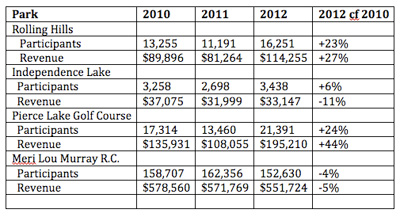
Chart showing participation and revenues for Washtenaw County parks, year-to-date through May 2012 compared to the previous two years. (Compiled by Margaret Leary using data from WCPARC)
Outcome: The participation and revenue report was received and filed. No vote was required.
Awards and Special Activities
WCPARC received its third national award in 10 years, from the National Association of County Parks and Recreation Officials, for the Rolling Hills accessibility project. The award is from NACPRO’s “removing barriers initiative,” which is “to recognize a unique program or facility that enables and encourages greater participation in parks and recreation by persons with disabilities.”
A 2011 NACPRO award went to Nelson Meade for Outstanding Public Official in honor of his 37 years of dedication to WCPARC. The other recent awards include:
- NACPRO, 2006: Outstanding Accomplishment in the Field of Parks and Recreation. This was for the county’s natural areas preservation program (NAPP).
- Michigan Farm Preservation Network, 2011: Barn of the Year, for the rehabilitation of the barns at Staebler Farm.
- Michigan Recreation and Park Association, 2012: Marketing Award, Single Brochure for WCPARC’s NAPP brochure.
County parks and recreation director Bob Tetens reported on the city of Ann Arbor’s new Argo Cascades, along which a segment of the Border-to-Border trail runs. The series of one- to two-foot drop pools are “wildly popular with kayakers,” he said, as is the trail, where he observed many people riding bikes, walking, and pushing strollers. According to Colin Smith, the city’s parks and recreation manager, the Argo Pond livery just ordered 60 more kayaks that they will lease, with a return on that investment expected by the end of the season. Kayaks outnumber canoes now on the river, Tetens said.
Next meeting: Tuesday, July 24, 2012 – a variation from the schedule so the commission can receive bids for the water park project, to keep that project on track to open on Memorial Day in 2014. Meetings are held at the county parks and recreation commission administrative offices, 2230 Platt Road in Ann Arbor. There will be no meeting in August.
Present: WCPARC commissioners Janice Anschuetz, Robert W. Marans, Jimmie Maggard, Nelson Meade, Patricia Scribner, Rolland Sizemore, and Dan Smith. WCPARC staff members Bob Tetens, Meghan Bonfiglio, and Coy Vaughn; guests Rebecca Bloomfield and Sharon Sheldon.
Absent: Janis Bobrin, Barbara Levin Bergman, Fred Veigel.




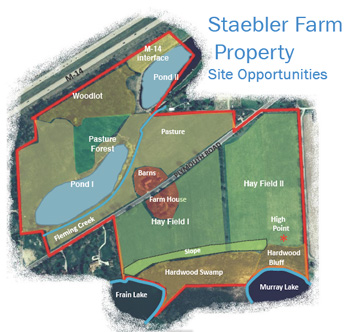
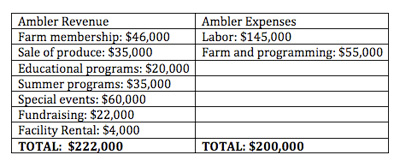


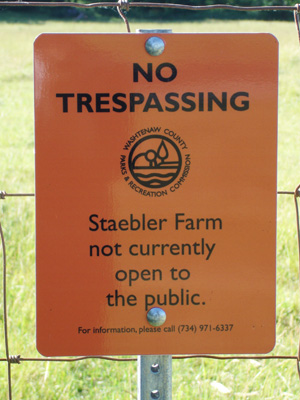
re: Smith’s comment about setting up an Amish community – Where do you expect to get Amish from? They’re not zoo animals. You can’t just go catch some and release them on the farm and expect them to start planting crops.